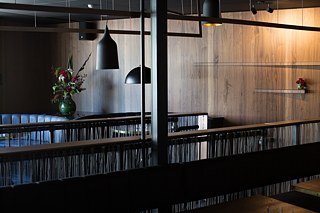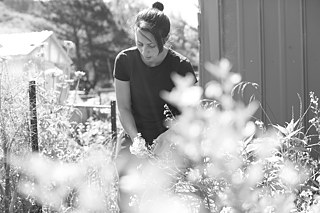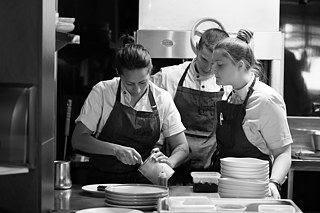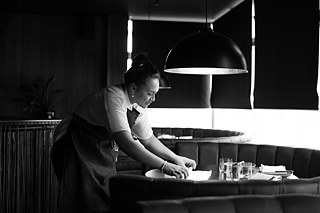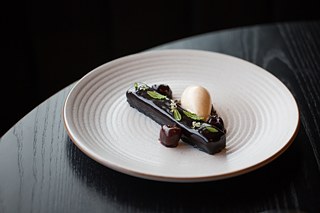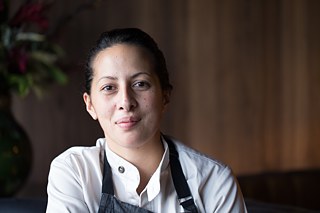Culinary Harbour Cities
Monique Fiso and HIAKAI - CELEBRATING UNIQUELY KIWI INGREDIENTS
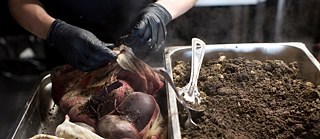
Monique Fiso is a woman who operates on very little sleep and when you name her recent achievements you can see why. Fiso started cooking when she was 14 years old and at only 18 made her first foray into fine dining working for Wellington icon Martin Bosley. Following almost a decade in New York City she recently returned home after adding some of the finest establishments in the business to her resume, including the Michelin-starred restaurant The Musket Room run by fellow New Zealander Matt Lambert.
In November 2018 Fiso opened her first bricks-and-mortar location in Wellington following an extremely popular series of Māori inspired pop-ups in New Zealand and abroad. New Zealand's Cuisine Magazine named Fiso "Cuisine New Zealand Future Food Legend" in the 2018 Cuisine Good Food Awards and she's currently flying the New Zealand flag in Netflix's latest competitive culinary offering, The Final Table.
For this interview I spoke with Hiakai founder and executive chef Monique Fiso prior to a collaborative dinner for the Goethe Institut.
What makes Hiakai unique?
We're using ingredients the nobody else in the country is using that probably haven't been seen on a menu, ever. So that first and foremost makes us Kiwi-forward and it differentiates us in terms of any restaurant in the world. On top of that, and without being overbearing, we incorporate an educational aspect to what we do. So as we're taking the dishes out to diners we're also explaining the background of these dishes and the importance of them to New Zealand. That's again, something that is quite different to any other restaurant.
At the Chef's Counter when we plate each dish we'll also pull out the native ingredient that relates to it in order to put it in context. When we pull out the ingredients at the Chef's Counter there will be people who mention that they see that plant every day on their walk and they're amazed that it is edible and it tastes as good as it does.
So for example, over there is a jar of kiekie flowers that we've soaked in gin. So when the pre-dessert comes out and it is a rhubarb sorbet with kiekie jelly, kiekie compressed strawberries we also pull the jar of flowers out and explain the ingredient and get them to smell it and understand it.
As another example, there is the beef dish which has mamaku on it. And when they see the dish the may not appreciate that it is a totally unique ingredient because it looks a little like salsify. But when we bring the actual mamaku to the table then they may recognise that they've seen it before in the bush and we can then tell them that's what you're eating. Mamaku is also in the petite fours and so diners get a savoury example of how to use it and a sweet example of something they probably didn't think would be edible in either context.
We're putting together a glossary that will go in the back on the menu. So that if someone didn't quite catch something that we said they can refer back to it and read about it. It will be more than a menu - it'll be a guide book and a reference.
What do you want people to take away from their experience at Hiakai?
Just looking at New Zealand a bit differently and realising that there is a lot of really cool stuff out there. I want people to leave thinking, I didn't realise there was this much to New Zealand food and that they'll walk away from here thinking New Zealand is just as exciting as other countries when it comes to food.
You started Hiakai as a series of pop-ups devoted to exploring Māori cuisine when you returned to NZ. What have you learned from the pop-ups and what have you brought with you to the brick & mortar location here in Wellington?
I started the Hiakai restaurant because I wanted to do food that was more complex and you can't do that in a pop-up setting. But, what I learnt from the starting with the pop-ups was that I didn't know as much as I thought I knew.
I went into the pop-ups thinking Māori cuisine is a few ingredients and then there are hāngi, boil-ups and fry bread. But now that is nowhere near our menu. Those things aren't even on the menu because I've just learnt so much more about the cuisine that we are just cooking in a completely different space now. We're using the ingredients in a much cooler and interesting way.
The pop-us were cool to start the brand and for me to learn. Over the two years that I ran the pop-ups my knowledge base of ingredients grew so much. I don't think if I opened the restaurant two years ago would have survived because I don't think I knew what I needed to know to make this successful.
The research I've done has been through engaging with people, reading a lot of books, going on-line, looking through archives. The Porirua Library has a really good section of books about Māori history. I've spent a lot of time looking at those reference books and reading historical accounts of people travelling with Māori and what they ate and what they saw and trying to take those accounts and recreate them in order to understand how ingredients were used because there are no recipes. There might be an account that talks about someone using mamaku and saying it was similar to apple and if they added sugar and wine it would make quite a nice pie. So I was taking these tiny snippets from historic accounts and we'd recreate the food to see where they were coming from and we probably wouldn't end up making a pie but it might end up as pâte de fruits.
I remember when my sous chef Max first came to work here and we had a whole bunch of foraged ingredients and he asked me, "How do we use these ingredients? Is there a book or something?" And I said, "No, we have to figure it out. That's the cool part."
The mamaku is something we knew about, but other than cooking it in a fire it didn't have other documented applications as so we started playing around with it. Other chefs we'd talked to said, "Mamaku, you can't use that. It's so slimey, I've tried to use that before." And we were like, "You just watch us! Just because you couldn't do it doesn't mean it can't be done you just need to think about it a little more." Figuring out something that nobody has been able to figure out is something that I love and there are a lot of those ingredients on our menu.
Hiakai offers a tasting menu dining experience. Does each dish have a unique New Zealand ingredient?
The hero of each dish has to be indigenous. Or it has to be relatable Kiwiana. For example in the petite fours we have the mamaku and the horipito chocolate and we also have our take on a Shrewsbury biscuit.
We follow our guiding principles when we're creating dishes. Is the hero an indigenous ingredient? Has it been done before? What's the meaning behind it?
All your experience with French, Italian, Japanese cuisine and working in fine dining here and Michelin starred restaurants must have to some extent influenced the Hiakai experience, right?
It all comes into play because you can find the ingredients, taste it and think well that's pretty similar to something else. Or the way it's reacting is similar to an ingredient from somewhere else and so let's try the same application on that ingredient and see where it takes us.
Everyone tries to say we are Māori cuisine, but it's complicated and it's not necessarily just Māori. I would say that we are New Zealand, but then other people don't categorise us as that because we're not European enough which is a little strange. It's funny to me, because if I am asked how I would categorise this restaurant I would say it is a New Zealand centric restaurant. If we can't be "New Zealand" centric then we'll be Aotearoa centric.
